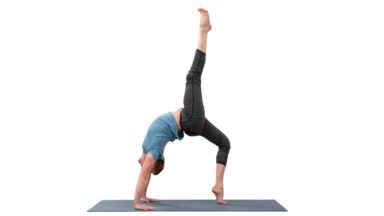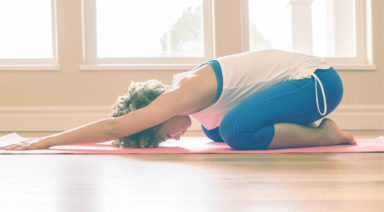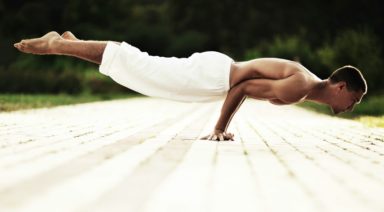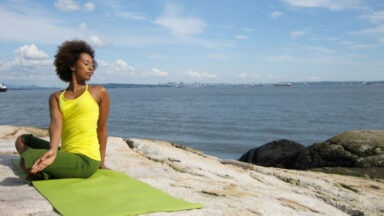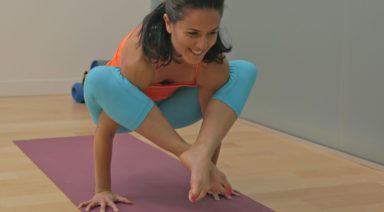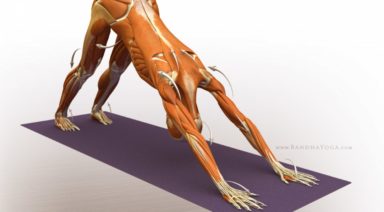Supta Virasana: Reclining Hero Pose
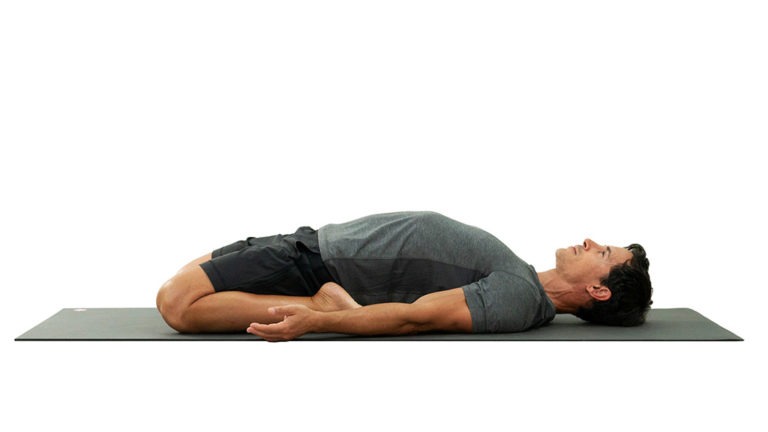
ADJUSTMENTS | BENEFITS | SEQUENCING | SANSKRIT | STEPS
Supta virasana (SOUP-tah veer-AHS-ah-nah), is the reclined version of hero’s pose. This shape is a deep knee bend and a deep hip flexor stretch — props are always a friend to this pose!
Philosophy + Origin
In order to be a hero in the world, you first need to be a hero to yourself. This restorative posture reminds you to be your best so you can give your best to the world and community. Although not often celebrated, the quiet moments of rest and restoration are as vital to creating and sustaining the hero as more noticed, grand “heroic” gestures. As you take time to practice supta virasana, reflect on how making space for yourself in your day creates more space in every other aspect of your life. The more expansive you are, the more capable you are of being the hero the world needs you to be.
ADJUSTMENTS/MODIFICATIONS:
- Practice ardha supta virasana (half reclining heros pose) to test out the intensity by keeping one leg extended. Hold for up to 10 breaths, then switch sides.
- Use support as needed under the upper body — try folded blankets, bolsters, blocks or any combination to find the right height for your body.
- Place a sandbag on your thighs to help relieve pressure on your hips and thighs.
- To deepen the pose, extend your arms over your head.
- Place a thickly folded blanket under your knees to relieve knee discomfort.
STEP-BY-STEP:
- Begin in virasana (hero pose). Hold this posture until you can comfortably sit between your heels, knees on the floor.
- To lie back, shift your weight to your hands, then to your forearms on the ground. Use your fingertips and palms to support your lower back and begin to release all the way to the ground or the supports behind you. Keep your knees in line with your hips.
- Lengthen your lower back. Think about drawing your tailbone forward to help your lower back soften toward the floor under you. Lay your hands at your sides like you would for savasana, palms up and fingers relaxed.
- Stay in this posture as long as it is comfortable, beginning with one minute and working up to five. When you’re ready to release, use your forearms and hands to return to virasana. Keep your chin tucked and lead with your chest.
PREPARATORY POSES:
- Cobra pose | Bhujangasana
- Heros pose | Virasana
- Upward-facing dog | Urdhva mukha svanasana
SEQUENTIAL POSES:
- Runners lunge
- Floor bow pose | Dhanurasana
- Dancer pose | Natarajasana
COUNTER POSES:
- Plow pose | Halasana
- Downward-facing dog | Adho mukha svanasana
- Childs pose | Balasana
SANSKRIT:
- Supta = reclining
- Vira = hero
- Asana = pose
PHYSICAL BENEFITS:
- Strengthens the knees, ankles, and arches of the feet.
- Improves digestion, relieving diarrhea, gas, and other issues.
- Encourages restful sleep.
- Helps alleviate symptoms of asthma and other respiratory issues.
ENERGETIC BENEFITS:
- Calms the mind.
- Improves mental digestion.
Legal Disclaimer Before participating in any exercise program or using any fitness products or services that may be described and/or made accessible in or through the Gaia Website and/or the Services, you should consult with a physician or other healthcare provider. Read more about Gaia’s Terms Of Use.
Virabhadrasana III: Warrior III Pose

ADJUSTMENTS | BENEFITS | SEQUENCING | SANSKRIT | STEPS
Warrior III, or virabhadrasana (veer-ah-bah-DRAHS-ah-nah) III, is a challenging pose of balance and strength.
Philosophy + Origin
A fierce warrior, Virabhadra is often depicted as having a thousand heads, eyes, and feet. Draped in the skin of a tiger, this warrior wields a thousand clubs. In Virabhadra’s origin story, he is created from a single dreadlock from Shiva’s head, a manifestation of the rage he feels upon feeling like his true love has died. The shape of virabhadrasana III comes from this story, the moment when Virabhadra beheads the king Daksha and extends forward to place the head on a stake.
Despite the outward appearance and violent origin, this powerful pose is actually a great reminder of our own inner strength and the measures we would take in the name of true love.





